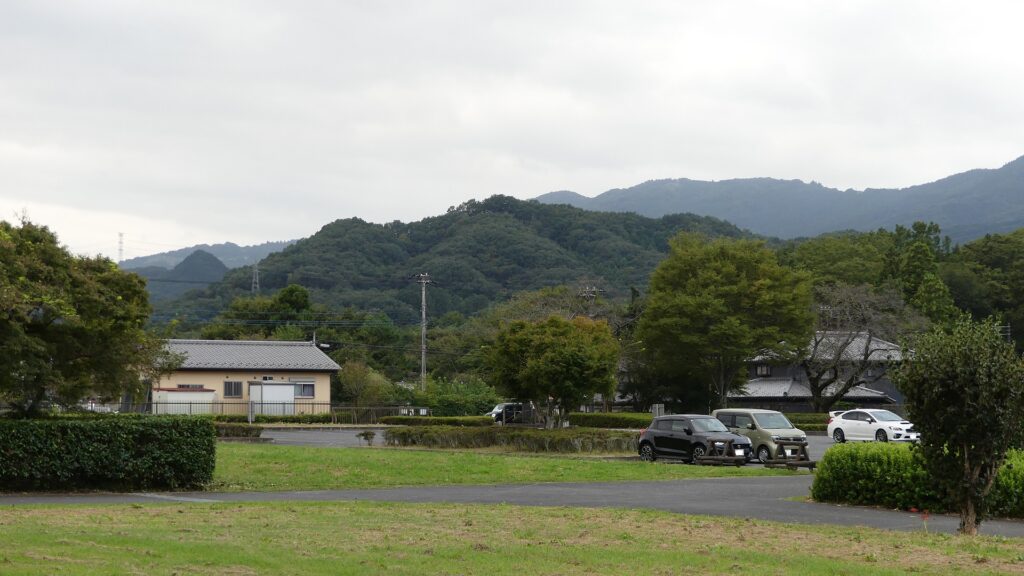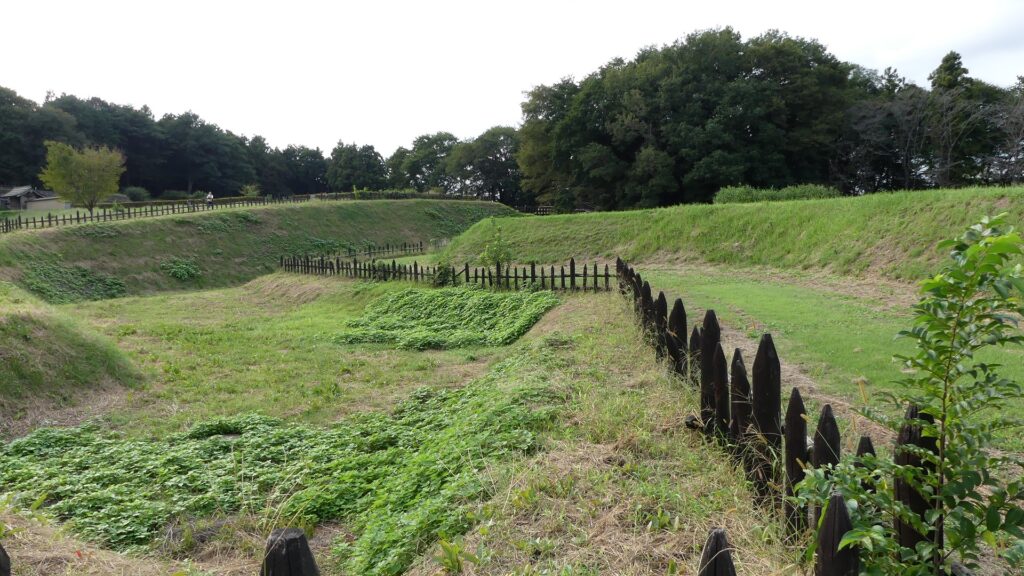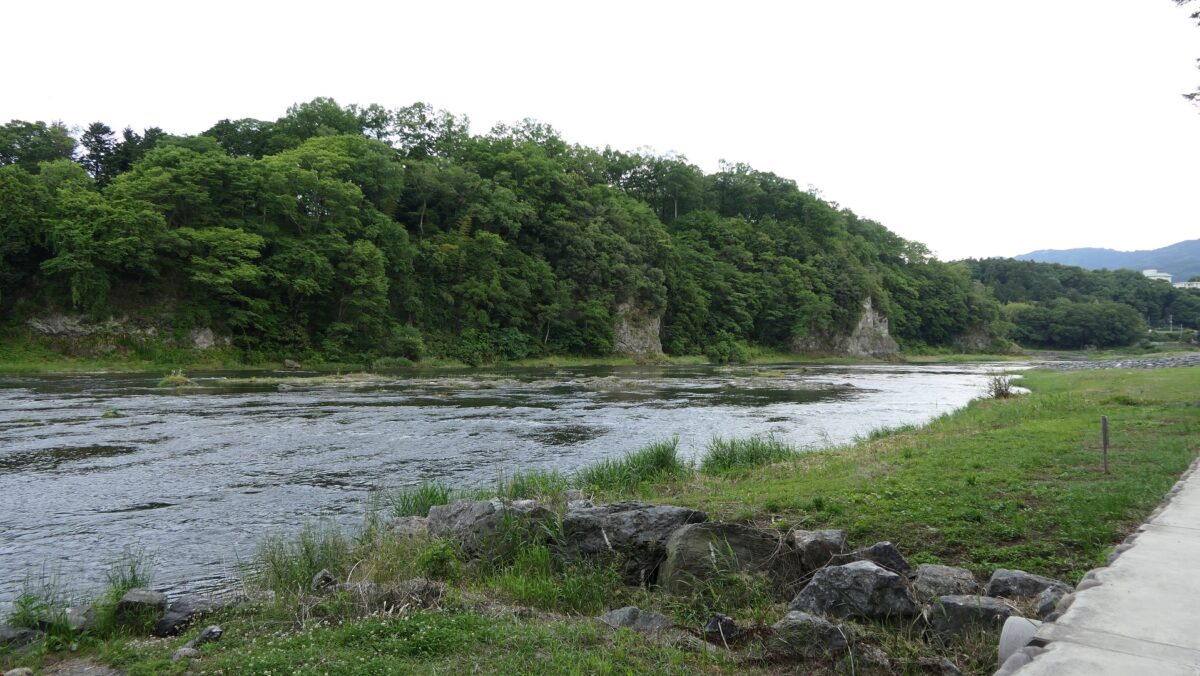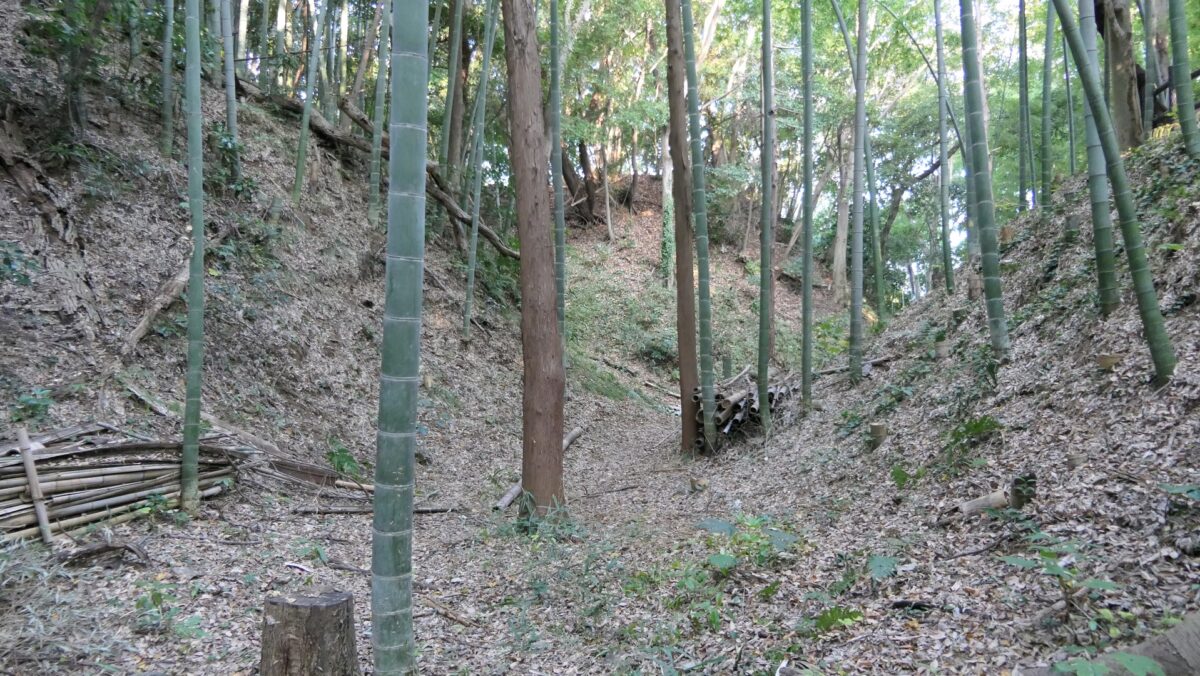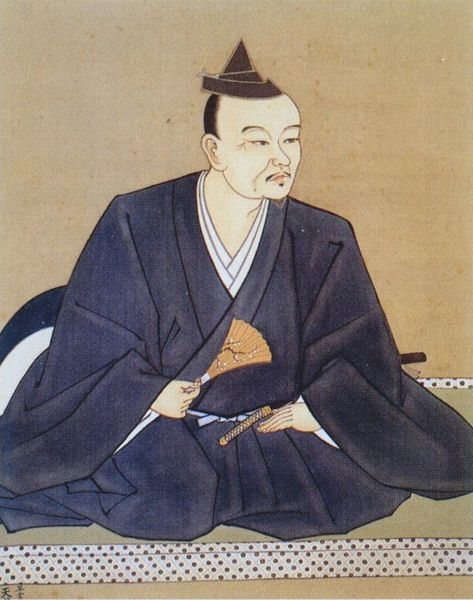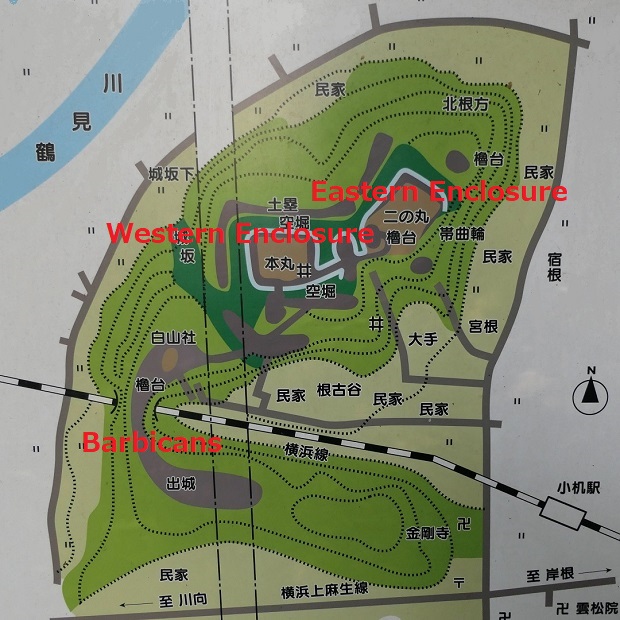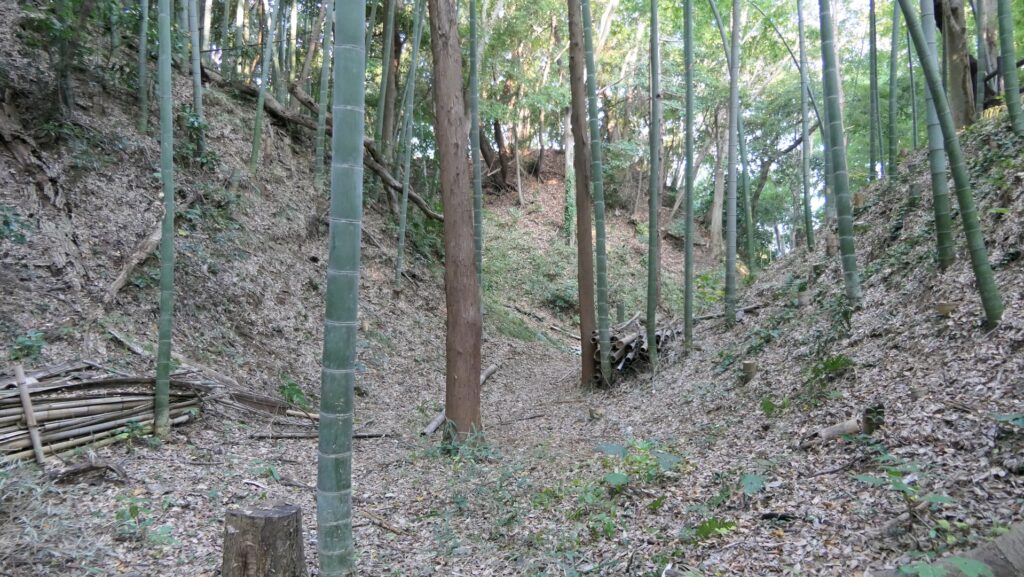Location and History
Hachigata Castle was located in modern day Yorii Town in the northern part of Saitama Prefecture. The castle was prominent both when the Sengoku Period of the Kanto Region started and ended.
Beginning of Sengoku Period in Kanto Region
The location of the castleThe region ran into the unquiet Sengoku Period in 1455 when the Kyotoku War began. The Ashikaga Clan, the shogunate head for the Kanto Region and the Uesugi Clan, the shogunate deputy for the region opposed and confronted each other at the Tone River, the largest river in the region. The Uesugi Clan constructed Ikkako Encampment at the western riverside and used it for over 20 years. The clan actually consisted of two branch clans, the Yamanouchi and the Ogigayatsu Clans. Each branch clan also had a main retainer to control many warriors and matters from the Nagao Clan for the Yamanouchi and the Ota Clan for the Ogigayatsu. One of the main retainers, Kagenobu Nagao died in 1473 before his position was assigned by his boss, Akisada Yamanouchi to his little brother, Tadakage.


Kageharu Nagao builds Castle
This was a reasonable decision, because Tadakage was considered as a senior and experienced person. However, Kagenobu’s son, Kageharu thought otherwise, as the position was inherited by his grandfather and father. Kageharu left the encampment, built Hachigata Castle in 1475, and started a rebellion in 1476. The castle was built on a high cliff at the meeting point of Arakawa River, another large river in the region, and Fukasawagawa River, a peninsula affording natural defense. Though the details of the first stage of the castle are unknown, it would have been easy for Kageharu to attack the Ikkako Encampment which had no guard on its southern side (which faced the castle). Many other retainers, who worried about their own positions in the new power hierarchy, supported Kageharu. The encampment finally collapsed in 1477.
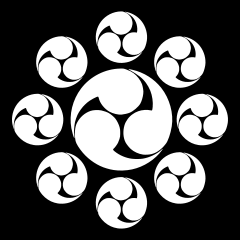
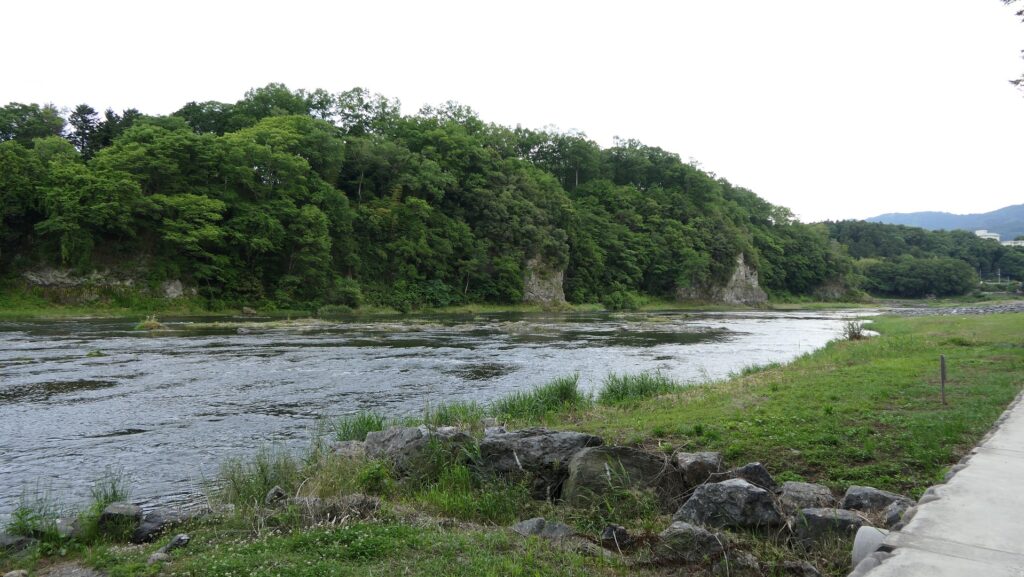

What Kageharu really wanted was unclear, but he tried to get many territories with his supporters and the Ashikaga Clan with whom Kageharu took sides. Kageharu was an excellent general. However, the other main retainer for the Ogigayatsu, Dokan Ota was superior to him. Dokan, who is known for building Edo Castle, which would become the center of the government during the Edo Period , and is now the Imperial Palace, was also a great strategist and politician. Dokan captured the Kageharu supporters’ castles, such as Kozukue Castle, one by one. He also made brokered a fragile peace with the Ashikaga Clan, which drove Kageharu back to his home base, Hachigata Castle. Dokan finally attacked and captured the castle in 1478, so Kageharu was forced to flee. Dokan became the greatest lord in the Kanto Region, however, he was killed in 1485 by his master, Sadamasa Ogigayatsu who feared his power. The region became unstable again and Kageharu continued to fight against his masters, the Yamanouchi, throughout his life as a soldier of fortune. He finally settled down under Sozui Ise, the founder of the Hojo Clan, until his death in 1514.
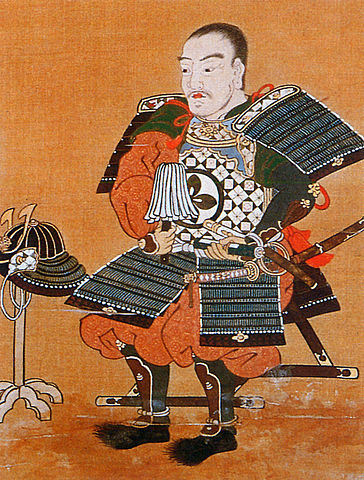
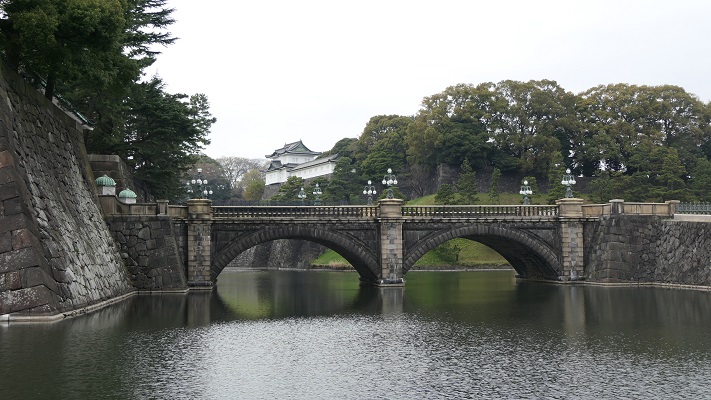


Castle becomes Hojo’s Branch
Hachigata Castle was occupied by the Yamanouchi for a while, but eventually abandoned. The power of the Uesugi Clans (Yamanouchi and Ogigayatsu) decreased while the Hojo Clan invaded the Kanto Region during the 16th Century. The Hojo Clan was based in Odawara Castle in Sagami Province (now Kanagawa Pref.) and they set several important branch castles where the Hojo’s relatives were sent to govern the region’s stability. Hachigata Castle was chosen as one of the castles as its location was at the northern edge of their territory. Ujikuni Hojo became the lord of the castle in 1568 and struggled to keep. For example, when the Hojo Clan allied with Kenshin Uesugi who was the successor of the Yamanouchi and one of the strongest warlords, Ujikuni was charged with negotiating with him. However, once the alliance was broken, Kenshin attacked Hachigata Castle, set fire to its castle town, and withdrew.



Ujikuni Hojo, Last Lord of Castle
To survive under these severe conditions, Ujikuni greatly improved the castle. The castle’s defenses were naturally strong, having been built on a tall cliff, sandwiched by the two rivers to the north, the east, and the west. It also had many enclosures made of soil, mainly including the Main, Second and Third Enclosures in a line from north to south. Therefore, enemies would have to attack the Third Enclosure first from the south. To prevent attack, these enclosures were divided by deep dry moats and surrounded by high, thick earthen walls. Part of the walls were supported by stone mounds looking like stone walls. The entrances of the enclosures were protected by a set of gates and the Umadashi system. The Umadashi system refers to a connected smaller enclosure in front of the gate, connected by a narrow path to the larger enclosures. The position could be used to both protect the enclosure and attack from it.

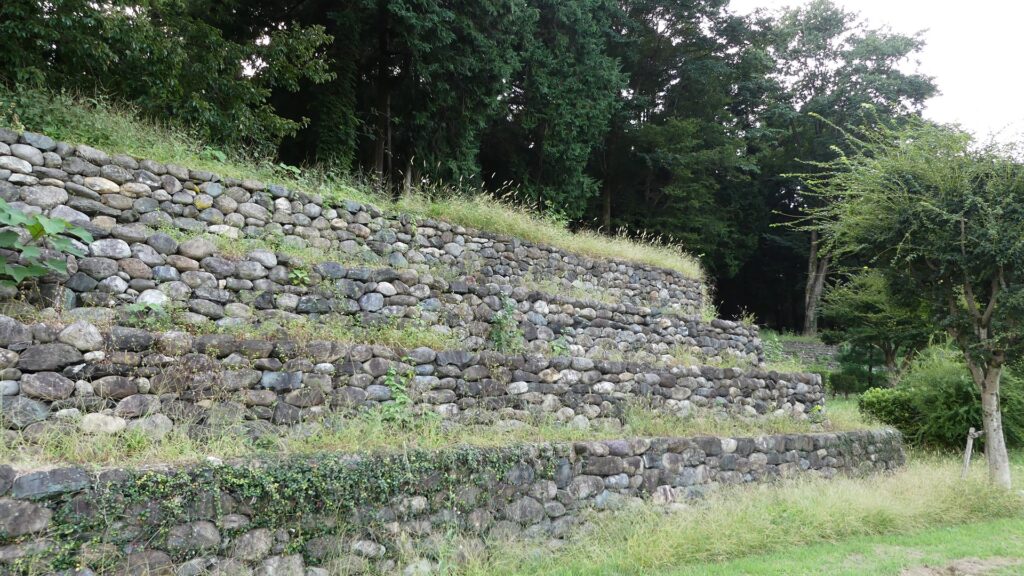

The history of the castle suddenly ended in 1590 when the ruler, Hideyoshi Toyotomi invaded the Kanto Region as the Hojo’s territory to complete his unification of Japan. He went there with over 200,000 soldiers and about 35,000 of which, attacked Hachigata Castle in May, led by Toshiie Maeda. Ujikuni, along with about 3,000 defenders, was besieged for a month. The attackers didn’t assaulted the castle, directly, instead, it is said that they fired large guns from Kuruma-yama Mountain, about 1 km away from the Main Gate of the castle to the south. Ujiie finally surrendered and opened the castle in June, perhaps because there was no hope for reinforcements, or due to the damage from the guns. The castle passed to the Tokugawa Clan, who now ran the region instead of the Hojo Clan, however, it was eventually abandoned at the end of the Sengoku Period.

